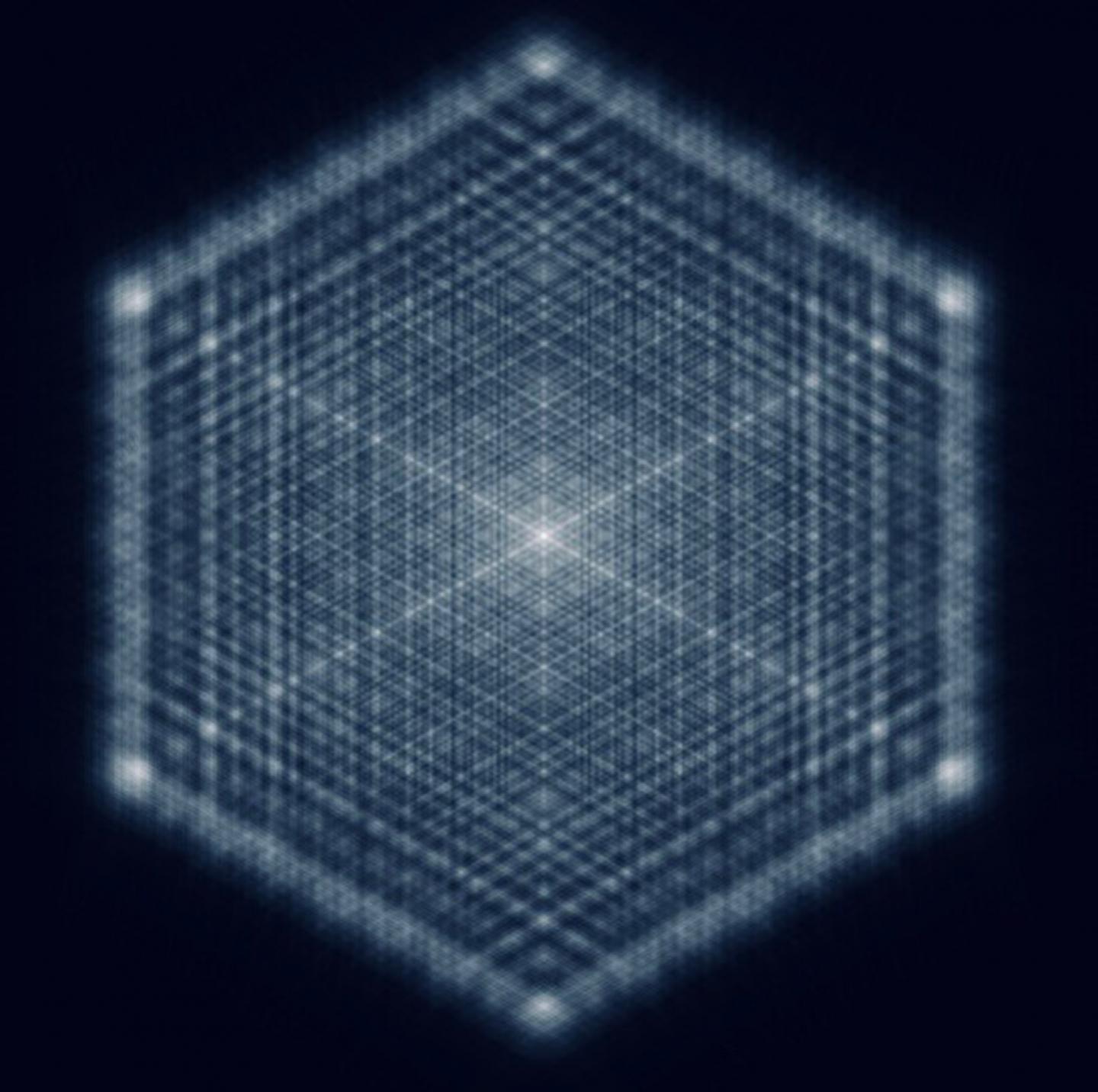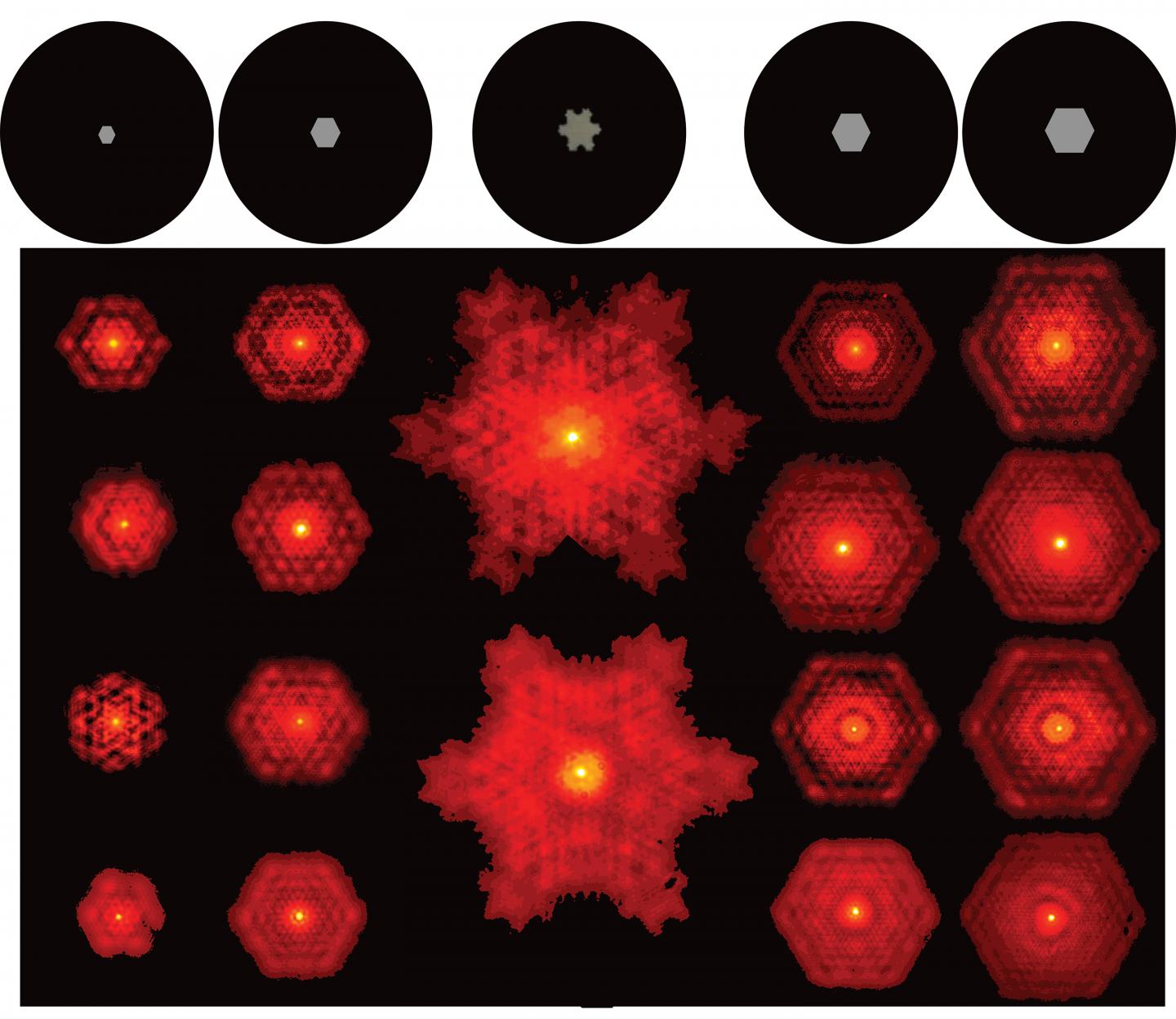Gorgeous Fractal Patterns, Normally Found Only in Nature, Re-Created Using Laser Light

Nature is brimming with beautiful patterns, like the seemingly complex shapes of snowflakes, coastlines, clouds and seashells.
But zoom in, and you'll see fractals, meaning the same, simple pattern repeating at smaller and smaller scales.
Now, researchers have found that a simple human-made object, a laser, can also create these stunningly intricate patterns — as was first predicted two decades ago. They reported their results Jan. 25 in the journal Physical Review A.
A laser can be thought of as a box that's made up of two mirrors, with light particles, or photons, bouncing back and forth between the mirrors, said study author Andrew Forbes, a professor of physics at the University of the Witwatersrand, in Johannesburg, South Africa. However, one of the mirrors is curved so that some of the photons bounce off at an angle and escape rather than hitting the other mirror again, Forbes said. The laser light we see is made up of those escaping photons. [Amazing Images: Heart Shapes in Nature]
Scientists predicted decades ago that the light escaping from the laser could theoretically produce a fractal under the right conditions. But it turns out that's not the case.
Rather, "what we had to do was to look inside the box," Forbes told Live Science.
To create the fractal, they used the curved mirrors of the laser and had them do double duty as a kind of "telescope." In this case, the mirrors were curved in a special way that distorted shapes like a funhouse mirror. "What a telescope does is [it] either makes big things small or small things big," Forbes said. So every time the light goes around once, their telescope system either magnifies it or shrinks it. As a result, in "one particular place [inside the laser], it forms this funny, this really crazy structure" — "an image within an image within an image," he said. In other words: a fractal.
Get the world’s most fascinating discoveries delivered straight to your inbox.
The researchers created many different kinds of fractals by playing with the curvature of the mirrors and thus changing the magnification.
They then built an imaging system that captured these internal fractals and brought them outside to a screen. The pattern repeats only until you reach the wavelength of the light, just like fractals in nature repeat only until zoomed in to the level of the atom, said co-author Johannes Courtial, a senior lecturer in physics and astronomy at the University of Glasgow in Scotland. (In mathematics, however, fractals repeat infinitely, as is the case with the famous Mandelbrot set.)
Up until this point, people were probably looking at the wrong place in the laser, Courtial said.
"We didn't look quite in the right plane [either], so it's not the perfect experiment," Courtial told Live Science. Now that they've figured out it can be done, in subsequent experiments, "we can do much better."
The theoretical simulations, led by Courtial, suggested that this pattern might not only exist in two dimensions, but also in 3D. That means that when you cut through the fractal pattern perpendicular to the plane it's on, you might see the exact same, self-similar pattern. When that showed up in simulations of the laser, "I did not expect that at all," Courtial said. But the researchers still have yet to prove this experimentally.
Courtial said they conducted these experiments "purely out of interest" and that there are no practical applications as of yet.
But knowing that laser lights can create fractals might possibly lead to some sort of microscope or imaging system that could look at multiple dimensions rather than the surface or just one layer of an object, Forbes told Live Science. "Fractal light carries a lot of complexity, and so one can dream that perhaps it's then the perfect type of beam to probe complex matter."
- How Do Fireworks Make Shapes?
- Photos: Large Numbers That Define the Universe
- Nature Under Glass: Gallery of Victorian Microscope Slides
Originally published on Live Science.

Yasemin is a staff writer at Live Science, covering health, neuroscience and biology. Her work has appeared in Scientific American, Science and the San Jose Mercury News. She has a bachelor's degree in biomedical engineering from the University of Connecticut and a graduate certificate in science communication from the University of California, Santa Cruz.

